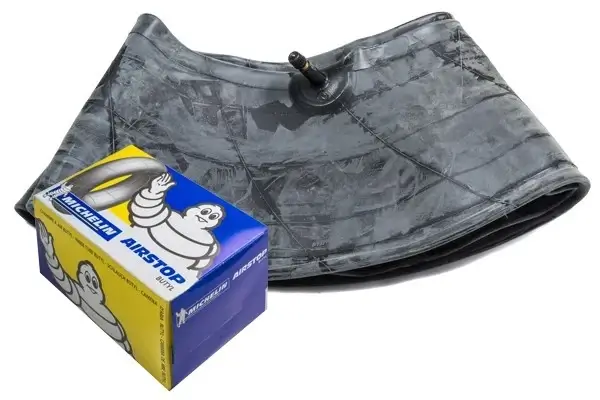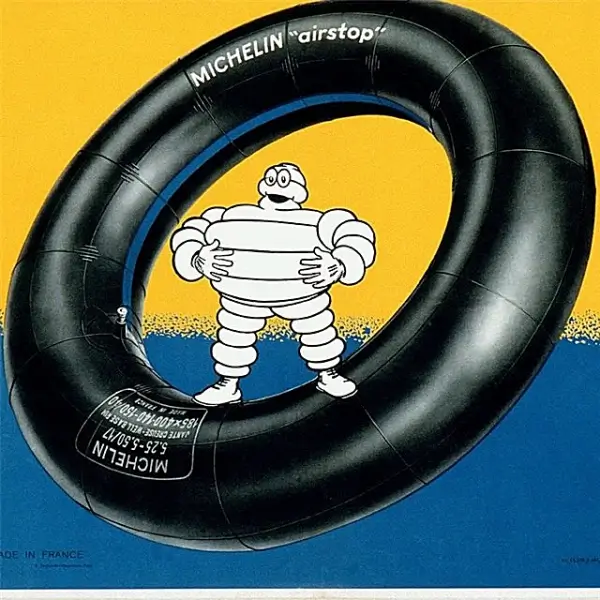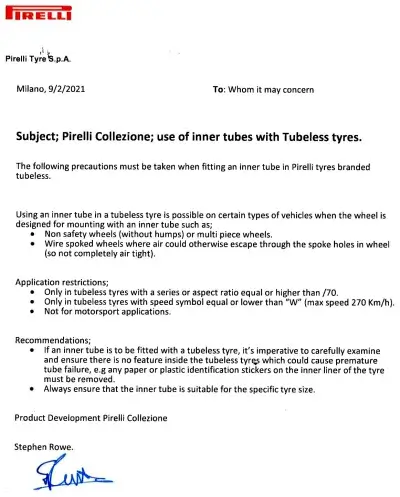Inner Tubes

Michelin Classic Tyre Inner Tube
Car Inner Tubes
- Most Vintage and classic cars will need inner tubes.
- Tubeless wheels started to be prolific towards the end of the 1960s.
- If your classic car has wire wheels, then we strongly recommend inner tubes. We will not fit any wire wheel without an inner tube.
- Do not fit inner tubes in tyres with a lower profile than 70%.
- Generally speaking we suggest fitting Michelin inner tubes.
To find the correct inner tube for your classic car please choose your classic tyre size from the drop-down list above; this will then tell you which inner tube you should fit.
Tubeless & Tube-Type Wheels Explained
It is worth pointing out that we strongly recommend fitting Michelin inner tubes to your classic car. We will offer Michelin in every circumstance where they are available. Where there isn't a Michelin tube that fits, we have offered the best one possible. In some sizes, there may be some alternative tubes, but please use a Michelin tube where you can – we like happy customers.

Period Michelin Inner Tube Advert
You may find there is an option of central valve or offset valve inner tubes. This describes how the valve exits your wheel rim, through the centre of the wheel (central valve) or from the side of the well in your wheel (offset valve). The majority of European vintage and classic cars from the mid '20 will want an offset valve on their inner tube. Vintage cars with beaded edge tyres, Straight sided tyres and some American cars such as a Model A Ford stuck with central valve inner tubes. H/D denotes heavy-duty inner tubes.
Rim tapes are used on well-based wire wheels to protect the inner tube from the spoke ends in the centre of the wheel and are available in two sizes, 14" - 17" and 18" - 21"
Flaps are essentially very heavy duty rim tapes and are used solely in straight sided wheels. They fit around the tube inside the tyre and protect the inner tube from the spokes, and also stop the inner tube getting trapped between the rim and the bead of the tyre.

Vintage Car Inner Tubes
The safety hump displayed in this picture shows the hump that in Longstone’s view shows that this wheel is built to be used without an inner tube.
Inner tubes were essential with all manner of tyres until the safety hump/ safety rib was developed and the tubeless wheel rim. When a tyre is 70% profile or taller it can be fitted with an inner tube. Tyres that are 65% profile or less should not run an inner tube.
Classic Car Inner Tubes
A large portion of the classic cars on the road today are fitted with wire wheels. Wire wheels were designed to be fitted with inner tubes. All the tyres that were fitted to the classic cars with wire wheels were not low profile tyres and therefore should fit inner tubes.
Radial Tyres and Inner Tubes
Inner tubes are not essential on modern radial tyres, however, there are situations in which fitting an inner tube is advantageous, providing the tyre is 70 profile or higher. If you run your radial tyres on a wheel without a safety rib, inner tubes will be an advantage, similarly, if you aren't sure about the quality of your wheel rim then an inner tube would be preferable with radial tyres.

This is a letter from Pirelli explaining their position regarding inner tubes.
When to Fit Inner Tubes
- A tubeless wheel needs an inner tube if fitted with a tube-type tyre.
- A tubeless tyre needs an inner tube if fitted to a wheel that is built to be used with a tube.
- Only a tubeless wheel, fitted with a tubeless tyre can be run tubeless. You need both.
Please Consider -
- Tyres with a profile below 70% (e.g. 185/60 VR 14 Michelin Pilot Exalto PE2) should not fit inner tubes.
- All wire wheels require inner tubes to be fitted, so do not buy <70% profile tyres if you have wire wheels fitted.
Reading Tyre Fitment Guides
When using data from our period fitment guides please note that tyre manufacturers base their fitment guide data on whether an inner tube is necessary with their own recommended tyres. Not just whether the wheel fitted to the vehicle is a tubeless wheel.
For Example, many cars from the 1970s fitted tubeless wheels, (wheels featuring a safety rib). The Michelin XAS tyres, in period, were tube-type tyres. In cases where Michelin recommends an XAS for a car, their fitment guides will say the car needs inner tubes. However, the wheel is a tubeless wheel with a safety rib and if fitted with an alternative tubeless tyre, no tube would have been needed. Therefore, for example; if the same car listed in a Pirelli fitment guide, where a tubeless CN36 tyre was recommended, the same car will be listed as tubeless.
Car Inner Tube Fitment Guide
Classic Tyre Inner Tube FAQ
A: There are a wide variety on inner tubes out their for the classic cars that might need them. However in our experience the Michelin Airstop range are the best car inner tubes.
A: All tyres before the war fitted inner tubes. All wire wheels fitted inner tubes in period. Longstone still suggest fitting inner tubes in all wire wheels. If a wheel does not have a safety rib to stop the tyres bead from slipping off the bead seat then it will be safer fitted with an inner tube.
A: Wire wheels were commonplace on cars up until the 1970s and all came fitted with inner tubes. There are now wire wheels designed to be used without inner tubes, however these wheels do regularly fail and are better fitted with inner tubes.
A: Inner tubes can be fitted in 70% profile tyres (185/70R13 or 205/70R15 etc) but inner tubes should not be fitted in to lower profile tyres (195/65R15, 215/60R15, 205/55R16 etc should not fit inner tubes).
